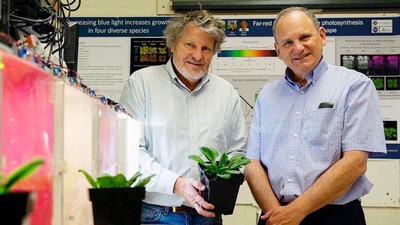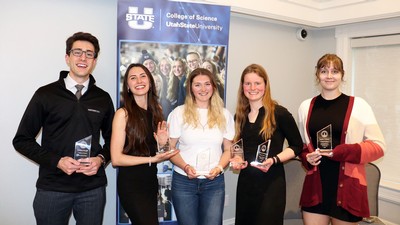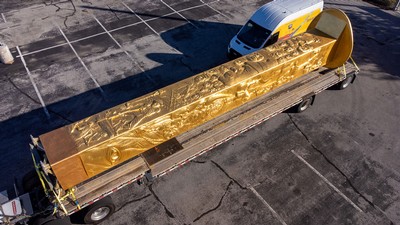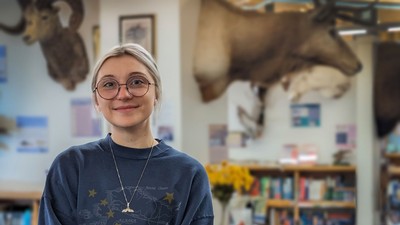A photo exhibit, “Bear River: Last Chance to Change Course,” can be seen in the foyer and lower level galleries of Merrill-Cazier Library at Utah State University Sept. 22 through Nov. 2. The exhibit is free and open to all. The Merrill-Cazier Library and Special Collections and Archives are the local hosts for the exhibit at USU.
Organized by the Utah Museum of Natural History, the exhibition features 39 original color photographs created by Craig Denton, a University of Utah communications professor, documentarian, photographer and author. His recent book of the same name was published in 2007 by Utah State University Press.
“The Bear River is familiar and recognized by many,” said Rose Milovich, art and book arts curator for Special Collections and Archives. “It is an important resource for the residents of Cache Valley and northern Utah.”
Milovich said the images in the exhibit provide a visual record of the river as it makes its way to the Great Salt Lake.
The Bear River is one of the longest rivers in America never to reach the ocean. It begins its 500-mile journey in northern Utah’s Uinta mountains, hugs the border with southwestern Wyoming, loops through southeastern Idaho and heads back to Utah where it empties into the Great Salt Lake west of Brigham City. Denton spent six years documenting the Bear River’s full course, using a 4 x 5 field camera to record its dynamic hydrology and a unique geomorphology that still ties the river to Lake Bonneville.
“I’ve tried to capture a glimpse of the complex, diverse ecology that the river nurtures —in less developed places,” Denton said in an article for the show. “I’ve situated my camera at points along the Bear’s course where important historical moments in the development of the West took place. I’ve also chronicled the stories of the stakeholders who rely on the river and who increasingly place more demands upon it.”
The photographic exhibition and book is Denton’s attempt to serve as the river’s voice and reveal its spirit. Documenting that “voice” was challenging, Denton said.
“I’ve had to ask myself how I can really speak for the river, either in words or through photographs, when the human voices surrounding it are so insistent and powerfully entrenched — and I am part of that human enterprise and benefit from it,” he said. “Ironically, words can’t adequately serve as the voice of a river. They are uniquely human symbols that come with definitions and boundaries drawn by ethnocentrisim. A visual language is better suited, since it is more fluid and integrative. It doesn’t create a speaker and language that separates him or her from the outside world. You shouldn’t require a dictionary to help you understand the photographs.”
Related links:
Contact: Rose Milovich (435) 797-0893
Source: Special Collections and Archives







